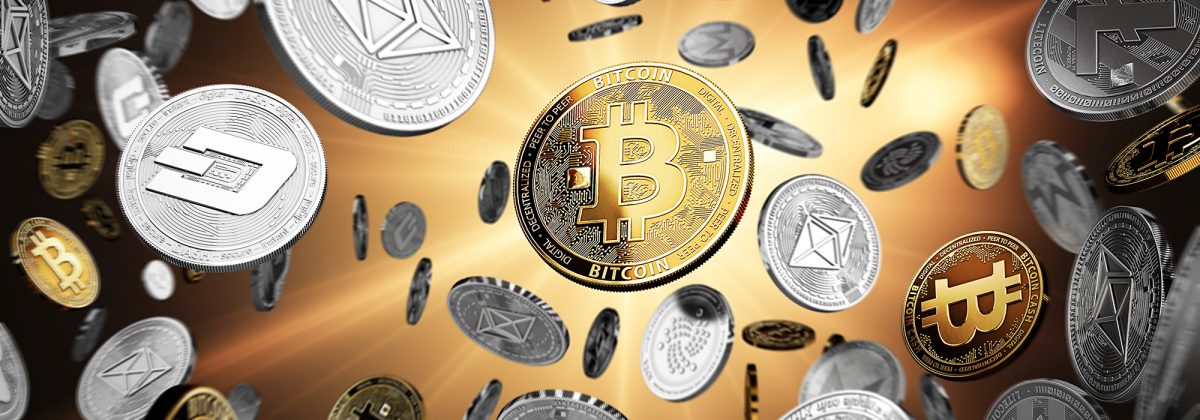The Effect of Growing Bitcoin Dominance on Altcoins

A quick overall glance of the cryptocurrency market shows that there are over 2.4K crypto coins currently in existence. Some of the most established coins, like Ethereum, Litecoin and Ripple, were designed to fix the inadequacies of Bitcoin, in terms of its philosophy and source code. Many others were created with the same purpose, most of which have ceased to exist in the last five years.
Despite thousands of rivals cropping up in the crypto space, BTC continues to be the largest crypto asset, in terms of price and market capitalisation. As of August 21, 2019, the digital currency had a market dominance of 68.9%. This dominance has been surging since the beginning of 2019, especially since the crypto broke out of a long bearish climate in April 2019. Crypto analysts believe that Bitcoin’s dominance of the crypto market could rise above 70% in the coming months. Altcoins, on the other hand, will continue to bleed out, despite their huge gains on account of Bitcoin’s strength against the US Dollar.
The value of altcoins has plunged more than 80%, since the peak altcoin season of 2018. Does the rising BTC dominance mean the end of the road for altcoins? Or is it just a sign of a maturing crypto market?
Why is Bitcoin’s Dominance Increasing?
The BTC dominance has hit a two-year high, and there are various reasons being attributed to this growth. In 2017, Bitcoin’s dominance fell below 40%, mainly due to the rise of Ethereum and Ripple, which together accounted for 40% market share in a very short period.
The ICO boom also contributed to the decline in BTC’s market share. New projects entered into the space, with hordes of excited investors propping up their market value. Anyone with a good whitepaper and a hyped up ICO campaign could attract lots of uninformed investors. This soon changed in 2018, with a majority of these projects failing to take off or start trading on exchanges.
From 2018 onwards, BTC continued to lose ground, as investors grew skeptical about putting money on crypto assets, following the huge number of failed projects. In the meantime, the Bitcoin community managed to improve the digital network’s scalability with SegWit and Lightning Network. Its hash-rate hit new highs of 70 quintillion hashes per second, which could be a major factor in the surge in its price in the future.
There has been higher growth in BTC transactions since January 2018. There is greater awareness regarding the digital currency and more people are transacting on the network. Even coins designed especially to facilitate transactions, such as Litecoin, have been unable to gain significant share from BTC, despite many years of use and growth.
Over the years, despite ups and downs, BTC has continued to hold its ground, making it a relatively stable alternative for investors. Market experts believe that it is the only asset that is not in a bubble right now. Globally, concerns regarding an economic slowdown are beginning to take hold. Sovereign bonds, the US Dollar and various other fiat currencies are showing signs of a multi-year bubble.
Gold, mining stocks and crypto assets seem to be the safe havens investors are turning to right now. And, when it comes to putting money into digital assets, traders somehow find BTC to be a logical investment alternative. This is in sharp contrast to a few years ago, when investors would take their money entirely out of the crypto markets during times of market crisis.
Now, BTC seems to be the flight to safety for many traders, which is likely to drive its prices further up. Crypto analysts have even predicted a price level of $20,000 for BTC by the end of 2019.
Is it the Beginning of the End for Altcoins?
Bitcoin has so far dwarfed the performance of altcoins. But, does that mean that the altcoin bubble is just waiting to burst? The point is debatable and there are many arguments on both sides.
Many traders believe that altcoins are currently overpriced. Some crypto tokens are highly valued due to their innovative underlying technologies, but a technology is of no use if it cannot be adopted by the masses. Crypto prices are mostly a result of speculation; assumptions about how useful a product will be in the future.
Bitcoin does score high in that regard. It is successfully being used in several projects and has been adopted by large enterprises. There are talks of Bitcoin-powered smart contracts too. IOV labs is currently building a second layer, on top of the Bitcoin network, which will serve as a platform for developing and running smart contracts.
If Bitcoin is able to power the next generation of Dapps, then the viability of lot of projects, like Ethereum and EOS, could decline. Ethereum is still struggling with scalability issues, and the internal community has remained divided on how to solve such problems. Many altcoins have failed to deliver real-world applications, despite trading successfully on crypto exchanges.
The utility value of these coins has been eroded by traders looking for speculative profits. At the same time, investors are less willing to speculate on smaller altcoins, which will act as a hindrance for the development of new crypto offerings.
From a trading perspective, altcoins might seem overpriced, due to the increasing maturity of the markets. It is not about the hype any more, but the fundamentals of a coin that count. In that regard, there are projects that seem to have far superior features to Bitcoin. Experts suggest that many of them will become extremely valuable entities in the future, so it might be wise to not make assumptions that the altcoin space is only a huge bubble right now.
The Future of Cryptos
It might be too soon to completely disregard altcoins. We have seen a BTC bull rally in the past, and also the subsequent decline. In a decade from now, BTC may or may not be in existence; we never know when a superior alternative comes onto the scene. There also are chances that Bitcoin could still be substantially over-valued due to price manipulation and other behavioural factors.
For now, the best course of action might be studying market fundamentals thoroughly before investing in any digital currency.
Reference Links
- https://cointelegraph.com/news/bitcoin-dominance-growing-what-it-could-mean-for-altcoins
- https://www.newsbtc.com/2019/06/21/bitcoin-dominance-crypto-altcoin-usd/
- https://cointelegraph.com/news/crypto-bubbles-why-traders-believe-altcoins-are-overpriced
- https://papers.ssrn.com/sol3/papers.cfm?abstract_id=3417334
- https://www.investing.com/analysis/bitcoins-rising-dominance-might-cause-altcoins-to-bleed-out-beyond-rescue-200446832
- https://coinmarketcap.com/charts/#dominance-percentage




